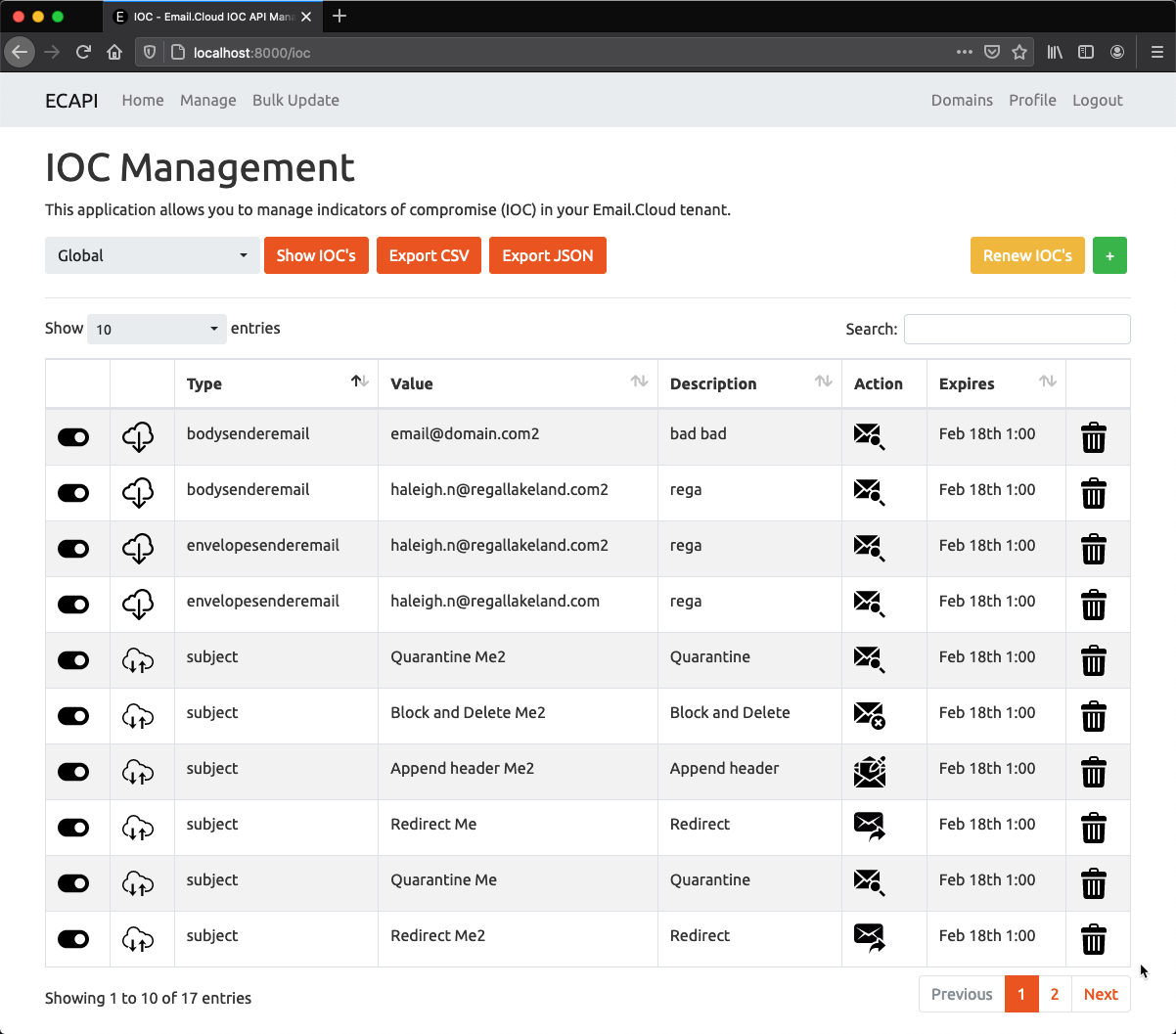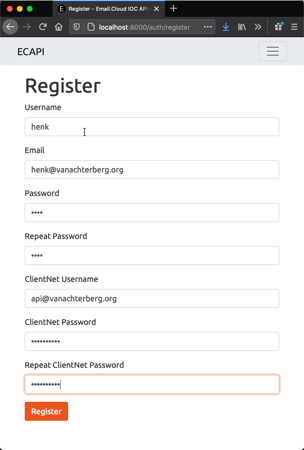
This repo contains the source code for the Email.Cloud API (ECAPI) docker container. Email.Cloud allows the use of Indicators Of Compromise (IOC) to manage in- and outbound email based on given criteria.
Please find the IOC API PDF Documentation here.
Clone or Download and extract the ZIP file of this repository and issue the following command to build the docker container:
docker build -t ecapi .Then issue the following command to run the docker container:
docker run --name ecapi -d -p 8000:5000 -v /docker/db:/home/ecapi/db ecapi:latestThis will start a docker container listening on port 8000 on the docker host and binds the folder /docker/db to the folder where the docker container stores its (SQLite) database. The -v /docker/db:/home/ecapi/db parameter is optional, without the parameter it will use the db inside the container.
Optional environment variables
| Environment variable | Default | Description |
|---|---|---|
| SECRET_KEY | 7Ghy648FibRfcgQ...AxdTFB2Brz | Used by the Flask server to encrypt sessions |
| SQLALCHEMY_DATABASE_URI | sqlite://./db/app.db | Used to point to a database that holds the users and domains |
| SERVER_NAME | Empty | External url used generate link in password reset email (test first without setting this parameter) |
| PREFERRED_URL_SCHEME | http | Used in conjunction with SERVER_NAME, https if TLS is used (test first without setting this parameter) |
| LOG_TO_STDOUT | False | If True logs will send to STDOUT |
| ADMIN_EMAIL | Empty | Administrator email to receive errors from the application |
| MAIL_SERVER | Empty | IP or DNS name of mail server |
| MAIL_PORT | 25 | TCP Port of mailserver |
| MAIL_USE_TLS | Empty | If set to True it will use TLS when sending email |
| MAIL_USERNAME | Empty | Username for the mailserver |
| MAIL_PASSWORD | Empty | Password for the mailserver |
| MAIL_FROM | Empty | From Email address used in password reset mail |
| ECAPI_URL | https://iocapi.emailsecurity.symantec.com/ | Base URL for IOC API |
-
Go to http://dockerhost:8000/
Register yourself a new user and enter your ClientNet credentials for the API (it is recommended to create a seperate API user in the ClientNet portal).
-
(optional) After logging in add your domains if you have domain specific IOC configuration.
-
Now you can start using the application by showing the current IOC's, use the + sign to add new IOC's or use the bulk upload functionality.
- Download/clone this repository
- In the root directory issue the
python -m venv venvcommand to create a virtual environment - Activate the virtual environment, e.g. in linux
source venv/bin/activate - Install requirements via
pip install -r requirements.txt - Create database with
flask db upgrade - Start flask
flask run - Visit the web application at http://localhost:5000/

